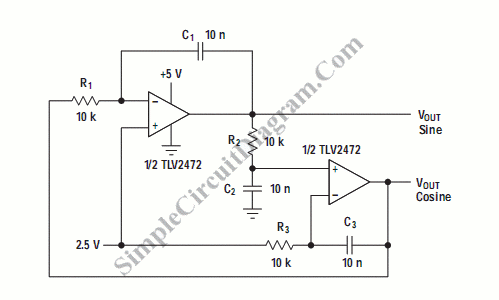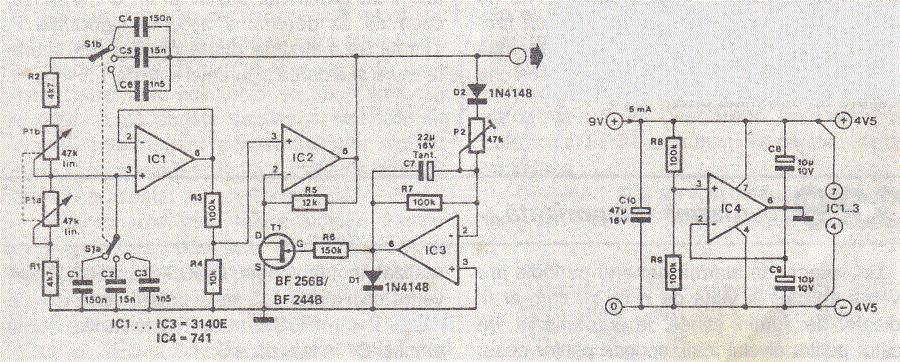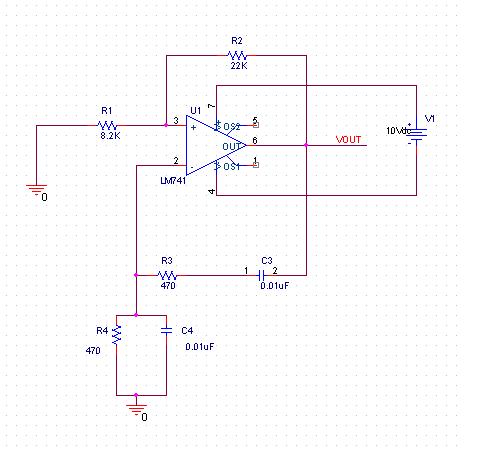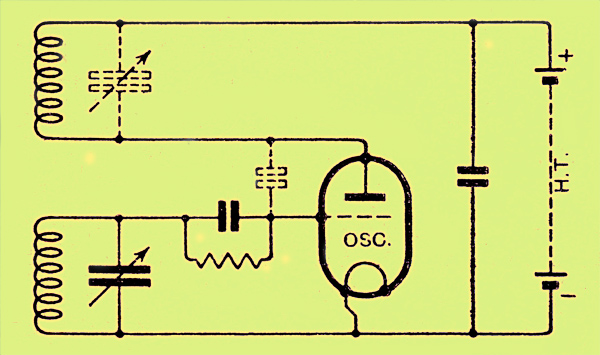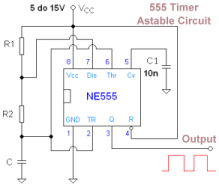
ICL8038-based Oscillator
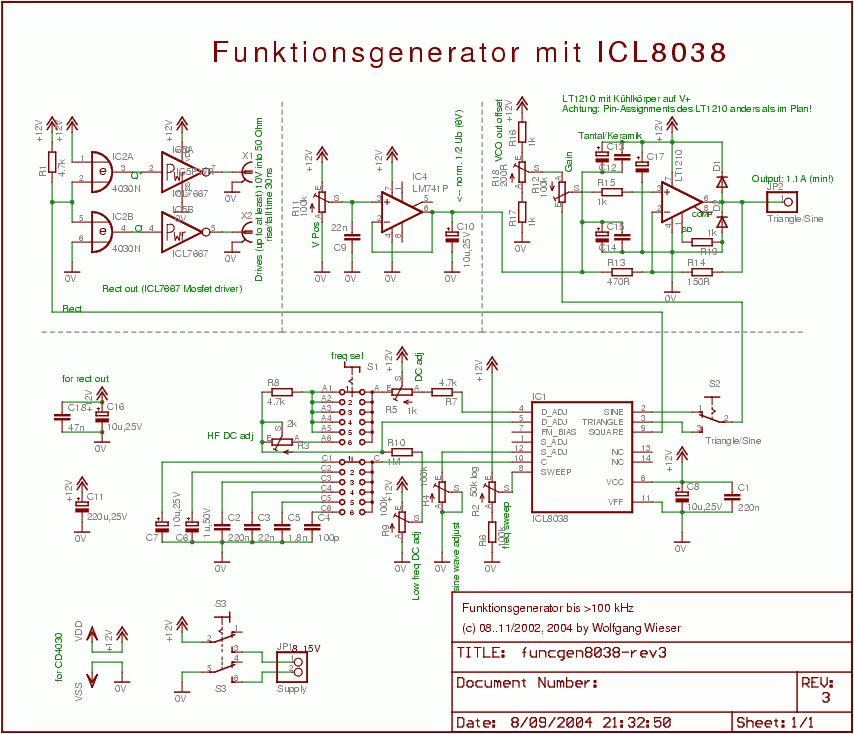
The circuit design is relatively straightforward. It features a Voltage Controlled Oscillator (VCO) utilizing the ICL8038 along with supplementary components, a sine and triangle output stage using the LT1210, and a CMOS-compatible output stage driven by the MOSFET driver chip ICL7667. The ICL8038 and its associated components located on the lower half of the schematic constitute the oscillator, which is a modified version based on one of the application examples in Intersil's data sheet. A large 6-stage switch (S1) is incorporated to select the major frequency, and a logarithmic potentiometer (R2) is used for minor frequency adjustments. Caution is advised against implementing the oscillator as depicted in the aforementioned data sheet, as many of the other potentiometers have proven to have an insignificant effect on the output waveform, making their use unjustifiable. Additionally, the duty cycle adjustment does not maintain a 50% ratio across all frequencies. The CD4030 located at the top left serves as a CMOS-logic signal preconditioning stage that feeds the MOSFET driver IC ICL7667, providing a complementary square wave output. The use of two XOR gates allows for the generation of a square wave and its complement without any time offset between them, due to the balanced rise and fall times of CMOS technology. A bypass capacitor should be placed near the ICL7667, as it can draw substantial currents and is capable of driving into 50 Ohms at voltages up to 10V, resulting in rise and fall times of 30 ns. The digital output performance is satisfactory. An industry-standard LM741, in conjunction with R11, is utilized to adjust the sine/triangle offset level; however, it is recommended to consider a more robust alternative to enhance output current. This oscillator operates on a single supply, allowing for adjustment of the "zero level" of the output waveform, typically set to half of the supply voltage. R11 is designed for user accessibility. The sine/triangle output amplifier was challenging to find, as it must support 1A output without deteriorating the signal waveform at several hundred kHz. The ADSL line driver LT1210 from Linear Technology was selected for its high gain-bandwidth product (GBP) and high slew rate, providing the necessary output current (1.1A guaranteed) across all relevant frequencies. This component can be sourced from suppliers such as BG Rklin. It was noted that this current feedback amplifier requires exceptional DC decoupling and bypassing capacitors to prevent self-oscillation at frequencies up to 40 MHz. Considerable effort was invested to ensure proper functionality; once achieved, the amplifier demonstrated excellent performance. However, it is acknowledged that the current implementation may still experience oscillation under specific load conditions. R18 is employed to adjust the VCO output offset from the ICL8038, typically set to half the supply voltage. R12 is provided for user gain adjustment, allowing the sine/triangle amplitude to be tuned from zero to above the supply voltage, potentially resulting in waveform clipping. The maximum gain is controlled by R13 and R14, and it is crucial to use appropriate values as per the LT1210's data sheet recommendations.
The circuit is designed to provide a versatile and stable waveform generation system suitable for various applications. The primary components, including the ICL8038 and LT1210, are chosen for their performance characteristics, ensuring that the oscillator can deliver high-quality sine and triangle wave outputs. The inclusion of user-adjustable components allows for customization based on specific application needs, while the attention to detail in the design, such as the bypassing of the MOSFET driver, helps maintain signal integrity. The use of CMOS logic ensures compatibility with digital systems, making this circuit a practical choice for modern electronic designs.The circuit is a fairly easy design: It consists of the actual VCO (ICL8038 with supplement parts), the sine and triangle output stage (LT1210) and the CMOS-compatible output stage using the MOSFET driver chip ICL7667. The ICL8038 and all parts around on the lower half of the sheet make up the actual oscillator which is a modified design based on
one of the application examples in Intersil `s data sheet. There is a large 6-stage switch (S1) to select the major frequency and a logarithmic potentiometer (R2) for minor frequency selection. I discourage implementing the oscillator as shown in the above sheet because most of the other potentiometers turned out to be without significant enough effect on the output wave form to jusify their application.
Furthermore, duty cycle adjustment will not keep a 50% ratio over all frequencies. The CD4030 on the left top is used as CMOS-logic signal preconditioning feeding the MOSFET driver IC ICL7667 as output stage for the complementary square wave output. The application of the two XOR gates has the advantage that it can supply a sqare wave and its complement without time offset between them (because CMOS has balanced raise and fall times).
Use a bypass capacitor near the ICL7667 device as it can draw quite strong currents and is capable of driving into 50Ohm up to at least 10V resulting in rise/fall times of 30ns. So, I`m now entirely satisfied with the digital output. The industry-standard LM741 in combination with R11 is used to adjust the sine/triangle offset level.
(Hint: You should probably use something better here - especially more output current cannot hurt. ) Since this oscillator is single-supply, it comes handy that you can change the "zero level" of the wave output; you will normally adjust that to half of the supply voltage. R11 is meant to be available to the user. The actual sine/triangle output amplifier was a bit hard to find because it should be able to drive 1A while still not degenerating signal wave form at some hundred kHz.
After some searching, I found the ADSL line driver LT1210 from Linear Technology. Being an ADSL line driver, it has a high GBP and high slew rate while providing the required output current (1. 1A guaranteed) at all frequencies in question. The part can be obtained e. g. from BG rklin. It turned out that this quick current feedback amplifier required very good DC decoupling/bypassing capacitors in order not to start oscillating of its own (at frequencies up to 40MHz).
It took me a lot of time to get it work properly; but once that is achieved, the amplifier shows very good performance. (Note: The current implementation is not yet perfect as I noted some months later: It may still start oscillating for parts of the period when driving some special loads.
) R18 is used to trim the VCO output offset from the ICL8038 (about half supply voltage). R12 is meant for the user as gain adjustment to tune the sine/triangle amplitude from zero to more than supply voltage (resulting in wave tips being cut off). The maximum gain is trimmed by R13/R14 and care sould be taken to use proper values (consult LT1210`s data sheet for details).
🔗 External reference
The circuit is designed to provide a versatile and stable waveform generation system suitable for various applications. The primary components, including the ICL8038 and LT1210, are chosen for their performance characteristics, ensuring that the oscillator can deliver high-quality sine and triangle wave outputs. The inclusion of user-adjustable components allows for customization based on specific application needs, while the attention to detail in the design, such as the bypassing of the MOSFET driver, helps maintain signal integrity. The use of CMOS logic ensures compatibility with digital systems, making this circuit a practical choice for modern electronic designs.The circuit is a fairly easy design: It consists of the actual VCO (ICL8038 with supplement parts), the sine and triangle output stage (LT1210) and the CMOS-compatible output stage using the MOSFET driver chip ICL7667. The ICL8038 and all parts around on the lower half of the sheet make up the actual oscillator which is a modified design based on
one of the application examples in Intersil `s data sheet. There is a large 6-stage switch (S1) to select the major frequency and a logarithmic potentiometer (R2) for minor frequency selection. I discourage implementing the oscillator as shown in the above sheet because most of the other potentiometers turned out to be without significant enough effect on the output wave form to jusify their application.
Furthermore, duty cycle adjustment will not keep a 50% ratio over all frequencies. The CD4030 on the left top is used as CMOS-logic signal preconditioning feeding the MOSFET driver IC ICL7667 as output stage for the complementary square wave output. The application of the two XOR gates has the advantage that it can supply a sqare wave and its complement without time offset between them (because CMOS has balanced raise and fall times).
Use a bypass capacitor near the ICL7667 device as it can draw quite strong currents and is capable of driving into 50Ohm up to at least 10V resulting in rise/fall times of 30ns. So, I`m now entirely satisfied with the digital output. The industry-standard LM741 in combination with R11 is used to adjust the sine/triangle offset level.
(Hint: You should probably use something better here - especially more output current cannot hurt. ) Since this oscillator is single-supply, it comes handy that you can change the "zero level" of the wave output; you will normally adjust that to half of the supply voltage. R11 is meant to be available to the user. The actual sine/triangle output amplifier was a bit hard to find because it should be able to drive 1A while still not degenerating signal wave form at some hundred kHz.
After some searching, I found the ADSL line driver LT1210 from Linear Technology. Being an ADSL line driver, it has a high GBP and high slew rate while providing the required output current (1. 1A guaranteed) at all frequencies in question. The part can be obtained e. g. from BG rklin. It turned out that this quick current feedback amplifier required very good DC decoupling/bypassing capacitors in order not to start oscillating of its own (at frequencies up to 40MHz).
It took me a lot of time to get it work properly; but once that is achieved, the amplifier shows very good performance. (Note: The current implementation is not yet perfect as I noted some months later: It may still start oscillating for parts of the period when driving some special loads.
) R18 is used to trim the VCO output offset from the ICL8038 (about half supply voltage). R12 is meant for the user as gain adjustment to tune the sine/triangle amplitude from zero to more than supply voltage (resulting in wave tips being cut off). The maximum gain is trimmed by R13/R14 and care sould be taken to use proper values (consult LT1210`s data sheet for details).
🔗 External reference
Warning: include(partials/cookie-banner.php): Failed to open stream: Permission denied in /var/www/html/nextgr/view-circuit.php on line 713
Warning: include(): Failed opening 'partials/cookie-banner.php' for inclusion (include_path='.:/usr/share/php') in /var/www/html/nextgr/view-circuit.php on line 713
